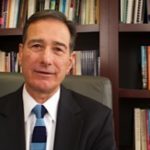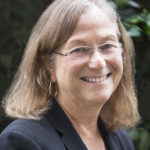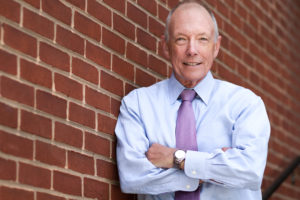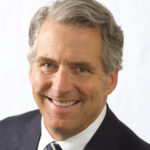2020 Conference Blog- Day 2
USC CERPP Executive Director, Jerry Lucido, opened the day noting the theme of the conference: Reclaiming Public Trust in Admissions and Higher Education. We must change, the country needs us to change, but how do we do it? We need to talk about it and bring scholars and leaders together to build an agenda for change. We are counting on participants learning and contributing. With that, Lucido introduced the speakers, Nicholas Hillman and Ozan Jaquette.
Session 1. Institutional and Public Priorities: Who We Recruit, Who We Support, How We Can Do Better. Nicholas Hillman (U. of Wisconsin-Madison) & Ozan Jaquette (UCLA)
 Nicholas Hillman is an Associate Professor in the School of Education at the University of Wisconsin-Madison. Hillman’s research examines how finance, policy, and geography shape educational opportunities in the United States. He also directs the Student Success Through Applied Research Lab, a research-practice partnership with the university’s Division of Enrollment Management and Office of Student Financial Aid. Hillman is an alumnus of Indiana University-Bloomington and is a faculty affiliate with the University of Wisconsin’s Institute for Research on Poverty and the La Follette School of Public Affairs.
Nicholas Hillman is an Associate Professor in the School of Education at the University of Wisconsin-Madison. Hillman’s research examines how finance, policy, and geography shape educational opportunities in the United States. He also directs the Student Success Through Applied Research Lab, a research-practice partnership with the university’s Division of Enrollment Management and Office of Student Financial Aid. Hillman is an alumnus of Indiana University-Bloomington and is a faculty affiliate with the University of Wisconsin’s Institute for Research on Poverty and the La Follette School of Public Affairs.
Nicholas Hillman opened his session focusing on institutional and public priorities. He reflected on a a conversation that he had with a Wall Street Journal writer who asked, “How many colleges practice selective admissions?” Answer: Surprisingly, only 55 colleges admitted fewer than 20% of applicants. This is out of 4,600 higher education institutions in 2017.
Another key question is how many undergraduates enroll? And finally, how much money do colleges spend and receive? What might equity enhancing funding look like?
Question 1: How many colleges practice selective admissions? Please see slide deck, “If there were 100 colleges…” Out of 100 colleges, eight are super selective, 16 are selective, and 10 are moderately selective. The majority are broad access. Hillman notes that the 8% breeds a lot of scrutiny and attention, but it really is a small amount and most (66%) are broad access institutions.
Question 2: How many undergraduates enroll? (Please see slide deck for related visuals for trends by groups and institution types). Pell, Black, and Hispanic students are largely at broad access colleges. Looking at students based on income buckets, selective institutions and inequality go hand in hand.
Question 3: How much do colleges spend and receive? There is $210 billion spent on E&R in 2018 (please see graphs). [Education and related (E&R) spending per student includes instruction, student services,
and the instructional share of academic support, operations and maintenance, and institutional support]. We need to look not just how much is spent, but where it is spent. Spending and subsidies matter and can make a big difference for students.
Colleges can be seen as “dream hoarders” which can erode public trust and funding equalization is an underdeveloped public policy idea. We should imagine what things could look like if we discuss and think about these things.
Jaquette Slide Deck – Interactive!
 Ozan Jaquette is an assistant professor of higher education in the UCLA Graduate School of Education & Information Studies. His research specializations are organizational behavior, enrollment management, higher education finance, and higher education policy. Jaquette’s research program analyzes how postsecondary institutions change behavior to generate enrollment from desired student populations, with a focus on the tensions between the enrollment pursuits of access, academic prestige, and revenue generation. His past research analyzes the causes and consequences of out-of-state enrollment growth by public universities. His current research analyzes recruiting behavior by colleges and universities, utilizing “data science” methodologies and public records requests as data collection strategies.
Ozan Jaquette is an assistant professor of higher education in the UCLA Graduate School of Education & Information Studies. His research specializations are organizational behavior, enrollment management, higher education finance, and higher education policy. Jaquette’s research program analyzes how postsecondary institutions change behavior to generate enrollment from desired student populations, with a focus on the tensions between the enrollment pursuits of access, academic prestige, and revenue generation. His past research analyzes the causes and consequences of out-of-state enrollment growth by public universities. His current research analyzes recruiting behavior by colleges and universities, utilizing “data science” methodologies and public records requests as data collection strategies.
Next, Ozan Jaquette presented, “Follow the Money.” He noted his colleagues with whom he collaborated, Crystal Han (UCLA) and Karina Salazar (U. of Arizona).
He began with the DC policy conference related to access and inequality in education–the 2014 Access Summit. The achievement gap, under-matching, etc, were discussed but placed responsibilities on K-12 schools and students. Universities were required to pledge action plans. The rhetoric of universities is that “despite state disinvestment, we care about access”–but is that true? Jaquette noted that enrollment management is an opaque industry and points to internal resource allocation as a better indicator of organizational priorities than rhetoric and policies.
Jaquette walked through the enrollment funnel and the emphasis on “of those that apply, who gets in/how do we use financial aid.” The conceptual framing is based on Mitchell Stevens, emphasizing the sieve function and the political economy of higher education. Jaquette notes there is less research effort placed on who we are targeting and the interventions along the funnel.
Moving into the “iron triangle” of enrollment management, he describes the differences between a “national service” political economy and the role of the sieve to serve mobility and reproduction. Next, he described the “market” political economy. The sieve serves social reproduction more than social mobility.
Digging in, Jaquette described the decline in state appropriations as it relates to nonresident enrollment growth, which relates to declines in Pell and Black/Latinx populations. There is a crowd-out effect with nonresident enrollment growth linked to Pell and Black/Latinx enrollment declines in prestigious public research institutions.
Jaquette described research methods (see Research Overview slide), looking at off-campus recruiting events, etc., and the findings related to more out-of-state recruiting visits than in-state. Examining average median income of visited vs non-visited public high schools. In general, colleges are more likely to visit in-state high schools that are predominantly white and affluent. Even more racial bias is seen in out-of-state recruiting events.
With these research results, Jaquette and his colleagues utilized a local theory of change and provided the data to local organizations. These organizations took the data to Presidents, Boards, etc., to advocate for greater attention to equity by focusing on which students the universities really spent resources in recruiting.
Jaquette reserves his sharpest critique for policymakers–this is what happens when you make cuts to higher education funding. We should not vilify universities for a rational response to a reduction in political funding. We need more money (e.g. block grants) to be able to pay for the cost of educating students without exorbitant fees and increase the purchasing power of Pell students (e.g. double Pell grant amount).
Session 2. Admissions and Enrollment in Crisis. Donald Heller (U. of San Francisco) & Jerome Lucido (USC)
 Donald E. Heller is Provost and Vice President of Academic Affairs at the University of San Francisco. He is responsible for the university’s five schools, libraries, academic affairs, student life, enrollment management, online programs, branch campuses, and international relations. He works in the areas of educational economics, public policy, and finance, and he has consulted with the federal government and university systems and policymaking organizations in ten states. He has testified in front of Congressional committees, state legislatures, and in federal court cases. Heller has over 200 publications, and is editor or co-editor of six books. He has served as a Trustee of DePaul University since 2012. He earned an Ed.D. in higher education from the Harvard Graduate School of Education, and holds an Ed.M. in administration, planning, and social policy from Harvard and a B.A. in economics and political science from Tufts University.
Donald E. Heller is Provost and Vice President of Academic Affairs at the University of San Francisco. He is responsible for the university’s five schools, libraries, academic affairs, student life, enrollment management, online programs, branch campuses, and international relations. He works in the areas of educational economics, public policy, and finance, and he has consulted with the federal government and university systems and policymaking organizations in ten states. He has testified in front of Congressional committees, state legislatures, and in federal court cases. Heller has over 200 publications, and is editor or co-editor of six books. He has served as a Trustee of DePaul University since 2012. He earned an Ed.D. in higher education from the Harvard Graduate School of Education, and holds an Ed.M. in administration, planning, and social policy from Harvard and a B.A. in economics and political science from Tufts University.
Donald Heller began his discussion of the admissions and enrollment crises with a look at the definition of crisis. Looking at various definitions (see slide deck) — Heller notes the second definition is the most relevant: “A condition of instability or danger leading to a decisive change.”
Factors that have contributed to the crisis include increases in sticker prices, concerns about student debt, and questions about the value of a college degree, criticisms of universities and students, and the entire admissions maelstrom (see slide), including Varsity Blues.
Heller shifted into a discussion on what needs to be done:
- Tell better stories about prices. He showed two charts that show data over time (back to 1990) of the sticker price (tuition, room, and board) and the net prices (what they actually pay out of pocket after grant aid–not counting loans). Sticker prices have certainly gone up since 1990–approximately 120% for publics and 89% for privates–due in part to the disinvestment of state legislatures and government. In summary, we have gotten more expensive, but net prices have gone up nowhere near sticker prices (approximately 83% for publics and 32% for privates). Heller emphasizes that we must tell a better story about prices.
- Tell better stories about debt. We need to describe the real debt burdens, rather than the sensationalized numbers. It is important to examine who defaults (typically those that don’t graduate) and what protections are available. There is an immense amount of disinformation related to income-dependent payment. The greatest risk of defaulting is with students who attend for-profits and who usually have small amounts of debt. There is also a great need for financial literacy for students and their parents.
- Tell better stories about value of a college degree. The idea of getting a bachelor’s degree as a waste of money is prevalent. Heller shared data on the earnings advantage of college over a high school diploma. There is a small advantage over a diploma if you have some college experience. If you earn an undergrad degree, the increase is significant. Additional education relates to additional income.
Helping students make better decisions in choosing a college, financing their education (include appropriate borrowing), and making good decisions once enrolled are among the steps that we must take to support them.
Heller emphasizes the need for institutions to get their own houses in order. More specifically, aligning EM practices and policies with missions, examining policies and practices that lead to perceptions of a rigged system, and communicating concrete steps taken.
Making the Case and Seeking Answers. Jerry Lucido (USC). See full bio here.
 Next, Jerry Lucido introduced questions to consider:
Next, Jerry Lucido introduced questions to consider:
- Is it possible to be agents of change and institutional officers at the same time?
- Can we change and work together to reverse the out sized advantage wealth has in access and outcomes in higher education?
- Do we need a new Morrill Act? A new covenant? A public trust? Public investment model?
Lucido presents data on why we must act (please see slide for data and citations). In short, without change, disparities will deepen.
Moving into what we can do, Lucido suggests that we emphasize transparency. Nothing we do in recruitment and in admissions should be kept a secret. Processes should be open and clear (see specifics in slide deck). Lucido suggests “an absolute firewall” between development and admissions” noting that it is complicated and difficult, but a slippery slope that should be avoided.
From an equity perspective, equity and excellence should be seen as integral and interrelated. Merit must reflect this core tenet and metrics must be developed and used, and student progress must be paramount and data made available.
Cooperation is another area that is worthy of focus. Publishing ranges of admission rates based and graduation frequencies – with all relevant details- must be considered. Among the aspects of transparency to publicly address:
- To what extent do we consider family income in our decision to admit?
- To what extent do we meet the full need of our students? If so, how?
- If not, how much are students expected to pay from their own resources?
- How much loan can students be expected to accrue along the way?
- What will be the nature of their loan repayments?
- Do the policies that govern the granting of student aid in the freshman year remain the same each year? If they change, how so?
Next, Dr. Lucido shifted the discussion to rankings, noting Malcolm Gladwell’s poignant quote:
“Rankings are not benign. They enshrine very particular ideologies, and, at a time when American higher education is facing a crisis of accessibility and affordability, we have adopted a de-facto standard of college quality that is uninterested in both of those factors. And why? Because a group of magazine analysts in an office building in Washington, D.C., decided…to value selectivity over efficacy, to use proxies that scarcely relate to what they’re meant to be proxies for, and to pretend that they can compare a large, diverse, low-cost land-grant university in rural Pennsylvania with a small, expensive, private Jewish university on two campuses in Manhattan.”
Lucido poses several questions and alternatives to traditional rankings, emphasizing a tool generated from the Center for Enrollment Research, Policy and Practice. The system uses only public data and ranks across four dimensions:
- Access (percentage of transfer-ins and of full-time, first-time Pell recipients),
- Diversity (percentage of enrolled Asian, African American, Hispanic, nonresident, and other students of color),
- Affordability (grant/scholarship aid, average student loans, debt of completers, federal loan default rates, deferred cost student debt ratio), and
- Outcomes (retention and graduation rates, and ratio of graduation rates to debt).
Unweighted overall rankings assume the four dimensions are of equal value. Within the cells, users may give a particular dimension more importance in the ranking calculation by assigning it a higher weight, and reducing the other dimensions by the same amount. Weights must sum to 100%. (please see slide deck for results)
Lucido shifted back to a look at the key questions and opened the forum up for discussion:
- Is it possible to be agents of change and institutional officers at the same time?
- Can we change and work together to reverse the outside advantage wealth has in access and outcomes in higher education?
- Do we need a new Morrill Act? A new covenant? A public trust? Public investment model?
Session 3. Broadening the Definition of Mission Beyond the Institution. Sandy Baum (Urban Institute) & Michael McPherson (Mellon Foundation; Urban Institute)
 Sandy Baum is a nonresident senior fellow at the Urban Institute and professor emerita of economics at Skidmore College. Baum earned her B.A. in sociology at Bryn Mawr College, where she is currently a member of the Board of Trustees, and her Ph.D. in economics at Columbia University. She has written and spoken extensively on issues relating to college access, college pricing, student aid policy, student debt, affordability, and other aspects of higher education finance.
Sandy Baum is a nonresident senior fellow at the Urban Institute and professor emerita of economics at Skidmore College. Baum earned her B.A. in sociology at Bryn Mawr College, where she is currently a member of the Board of Trustees, and her Ph.D. in economics at Columbia University. She has written and spoken extensively on issues relating to college access, college pricing, student aid policy, student debt, affordability, and other aspects of higher education finance.
Baum has co-authored the College Board’s annual publications Trends in Student Aid and Trends in College Pricing since 2002. Through the College Board and the Brookings Institution, she has chaired major study groups that released proposals for reforming federal and state student aid. She has published numerous articles on higher education finance in professional journals, books, and the trade press. She is the principal researcher on the Urban Institute’s website on college affordability and her recent work includes Urban Institute briefs on Federal Work Study, Parent PLUS loans, and college endowments. She is the author of Student Debt: Rhetoric and Realities of Higher Education Financing (Palgrave Macmillan 2016) and co-author with Harry Holzer of Making College Work: Pathways to Success for Disadvantaged Students (Brookings Institution Press 2017). Baum publishes frequent blog posts on the Urban Wire at https://www.urban.org/urban-wire/author/sandy-baum.
 Michael S. McPherson served as President of the Spencer Foundation for fourteen years before retiring in 2017. Earlier he was President of Macalester College in St. Paul, Minnesota for seven years. He is a nationally known economist whose expertise focuses on the interplay between education and economics. McPherson is co-author or editor of several books, including Lesson Plan: An Agenda for Change in American Higher Education, Crossing the Finish Line: Completing College at America’s Public Universities, The Student Aid Game, and Economic Analysis, Moral Philosophy, and Public Policy. McPherson was founding co-editor of the journal Economics and Philosophy. He is currently a Senior Research Fellow at the Mellon Foundation, an adjunct Visiting Professor of Philosophy at Stanford University, and a non-resident Fellow at the Urban Institute.
Michael S. McPherson served as President of the Spencer Foundation for fourteen years before retiring in 2017. Earlier he was President of Macalester College in St. Paul, Minnesota for seven years. He is a nationally known economist whose expertise focuses on the interplay between education and economics. McPherson is co-author or editor of several books, including Lesson Plan: An Agenda for Change in American Higher Education, Crossing the Finish Line: Completing College at America’s Public Universities, The Student Aid Game, and Economic Analysis, Moral Philosophy, and Public Policy. McPherson was founding co-editor of the journal Economics and Philosophy. He is currently a Senior Research Fellow at the Mellon Foundation, an adjunct Visiting Professor of Philosophy at Stanford University, and a non-resident Fellow at the Urban Institute.
Sandy Baum and Mike McPherson furthered the conversation with their presentation, Broadening the Definition of Mission Beyond the Institution. Baum underscores the importance of a broader focus in understanding and improving the college admissions process, noting several strategies to increase public trust:
- Admissions strategies: relevant primarily for the most selective colleges and universities.
- These institutions do and will enroll a tiny slice of undergraduate students.
- In addition to redoubling efforts for admissions equity, institutions should consider their missions, values, and contributions more broadly.
- Our focus: using resources to strengthen opportunities for a broader segment of the population; revisiting goals for students and the contributions they will make.
McPherson moved the conversation into a look at the data on undergraduate student attendance at public two year or for-profit institutions (see slide deck). More specifically, 40% of undergraduate students attend public two-year or for-profit institutions.
Looking at instructional spending, they learned that a small share of students in four-year institutions have access to a large share of resources. Average spending per FTE student is 3.51 to 4.75 times as high in the most selective institutions as in the least selective institutions. Diving in deeper, McPherson highlights the distribution of endowment assets. Half of the endowment assets (and 5% of the students) are in the most selective institutions. In the private nonprofit sector, 68% of the endowment assets (and 14% of the students) are in the most selective institutions.
An examination of who goes to very selective institutions further underscores the relationship between income and attendance at highly selective schools.
McPherson shifted the conversation to things that do not matter to the majority of student and colleges (as they are at nonselective institutions):
- Affirmative action in admissions
- Test scores
- College essays
- Decision day
- US News rankings
An interesting consideration, McPherson distinguishes between what the public and selective colleges. Most Americans look at selective colleges and universities from the outside, but these institutions are very inwardly focused. The “spectators” think the presidents are all powerful and can do whatever they want, while selective colleges feel constrained as they focus on the needs of trustees, Boards, and wanting to do what is right:
- Raise selectivity
- Get more revenue from students
- Raise endowment
- Improve ranking
- Make institution internally more diverse
Baum picked up the conversation with an analogy to shareholder capitalism, noting the Business Roundtable’s August 2019 statement signed by more than 200 CEOs including Apple, Pepsi and Walmart:
“Americans deserve an economy that allows each person to succeed through hard work and creativity and to lead a life of meaning and dignity…While each of our individual companies serves its own corporate purpose, we share a fundamental commitment to all of our stakeholders.”
Meanwhile, the NY Times notes: “The shift comes at a moment of increasing distress in corporate America, as big companies face mounting global discontent over income inequality, harmful products and poor working conditions…It was an explicit rebuke of the notion that the role of the corporation is to maximize profits at all costs — the philosophy that has held sway on Wall Street and in the boardroom for 50 years.”
Pointing the parallel back to higher education begs the question, do selective institutions have responsibilities beyond their internal understanding of success?
Other questions to consider:
- What happens to applicants we encourage to apply but don’t accept?
- Do the institutions in which they enroll have the resources to adequately support and educate them?
- Do selective institutions have any responsibility for people in their communities—or elsewhere—who are not close to meeting their admission standards?
- What is the responsibility of these relatively privileged institutions in caring for the health of the higher education system as a whole?
Baum continues on noting that diversifying is not enough.
- Selective college admissions processes affect a small share of college students.
- 22% of first-year undergraduates attend institutions accepting less than half their applicants.
- 5% attend institutions accepting less than one-quarter of their applicants.
- Re-sorting of students among selective institutions
-
- Matters for students and institutions
- But far from the whole story on inequities in who goes where
-
- Considering Context: Broader issue of role of income and wealth in access to college and to different types of college experiences.
- Baum asks, can colleges do anything to ensure that more people from less advantaged backgrounds are in the pool for admission to selective colleges?
Baum holds suggests that higher resourced institutions should broaden their focus to influence funding for less affluent institutions, contribute to opportunities for all students, and help support a focus on public understanding of value of higher education.
McPherson asks, What can we learn from the Varsity Blues scandal? He emphasizes that money and fame were to blame for the scandal. He poses powerful questions:
Can selective admissions be justified in a world of unequal opportunity?
Can you explain to those who are excluded that selective admission is in the broader social interest?
- Eliminating selective admissions will not eliminate inequality.
- Elite intellectual environments are vital to our society.
- Accusations of higher education as causing inequality, exacerbating inequality are frequently not well thought out.
- Long run goal: dramatically expanding the pool of people who are ready to enter selective institutions.
McPherson concludes suggesting that inequality starts the day that you are born and is reinforced every day thereafter. It will take more than modifying the admissions process to make a real difference.
In conclusion, institutions with resources (not just the wealthiest institutions) can and should:
- Think about changing the opportunities with which potential students grow up
- Strengthen the surrounding community
- Work with schools, prisons, community organizations
- Support students who will never qualify for admission
- Produce graduates with a social conscience
Session 4. Leading Change: Senior Leaders Examine What is Possible.
Moderator: Ted Mitchell (ACE). Panelists: Catharine Bond Hill (Ithaka S+R; Vassar College) & James B. Milliken (The University of Texas System)
(No slide deck used)

Former college president and top federal policy maker Ted Mitchell became president of ACE on Sept. 1, 2017. His background includes service as president of a private liberal arts college, senior administrator at a state university and trustee of a major research institution. Mitchell was president of Occidental College (CA) from 1999-2005 and served as U.S. under secretary of education from 2014 until January 2017, reporting to the secretary of education and overseeing postsecondary education policies and programs.
He also has served as vice chancellor and dean of the Graduate School of Education and Information Studies at the University of California, Los Angeles, and professor and chair of the Department of Education at Dartmouth College (NH). Prior to becoming under secretary of education, Mitchell was chief executive officer of the NewSchools Venture Fund from 2005-2014, and served as the president of the California State Board of Education. After concluding his service at the Department of Education, Mitchell served as a consultant to ACE in the areas of education attainment and innovation and leadership development.
Ted Mitchell opened the conversation with an introduction to ACE and the work that they have done. He shared that their goal was to understand the negative narrative in higher education and to parse it out in a way that institutions could take a run at improving it. Citing a podcast, Mitchell notes: We not only do we have to tell our story better but we need to do our jobs better.
Related to the negative narrative, we need to be honest and they found in focus groups and surveys–even before the Varsity Blues scandals–they were hearing people say college is for other people and referenced the admissions “game.” Whether it was essay coaching, SAT coaching, consulting, legacy admissions, donations, athletic admits, admissions is seen as a game that they are disadvantaged in playing. Mitchell cites a mismatch between institutions internally and the messages that they are getting out. Processes need to be fair and legitimate. He notes that people were forgiving about the idea that institutions need to balance the books, but the fairness comes when we are clear about it.
 As managing director, Catharine (“Cappy”) Bond Hill leads Ithaka S+R’s research and consulting initiatives to broaden access to higher education, reduce costs, and improve student outcomes. A noted economist whose work focuses on higher education affordability and access, as well as on economic development and reform in Africa, Bond Hill joined Ithaka S+R in September, 2016. She oversees Ithaka S+R’s program areas, working to help the higher education, library, scholarly communication, and museum communities adapt to the technological and economic context of the 21st century.
As managing director, Catharine (“Cappy”) Bond Hill leads Ithaka S+R’s research and consulting initiatives to broaden access to higher education, reduce costs, and improve student outcomes. A noted economist whose work focuses on higher education affordability and access, as well as on economic development and reform in Africa, Bond Hill joined Ithaka S+R in September, 2016. She oversees Ithaka S+R’s program areas, working to help the higher education, library, scholarly communication, and museum communities adapt to the technological and economic context of the 21st century.
From 2006 to 2016, Bond Hill served as the tenth president of Vassar College. Under her leadership, Vassar reinstated need-blind admissions and replaced loans with grants in financial aid for low-income families. While at Vassar, she also established a first-of-its-kind veterans admission partnership with the Posse Foundation, with Vassar enrolling its first eleven veterans as freshmen in 2013. Prior to her Vassar presidency, she served as provost of Williams College, where she had chief academic and financial officer responsibilities. She serves on the board of the Yale-NUS College and is senior fellow on the Yale Board of Trustees.
Next, Catharine “Cappy” Bond Hill commented on things that were making it difficult for college leaders to lead change in a positive way:
- Colleges and universities are not operating in a vacuum but rather an increasingly challenging economy.
- They also compete with each other–sometimes viciously. What might be in the interest of all schools, because of competition, they can’t.
- Social media is also problematic.
1. Challenging Economy. Increasing income and inequality is partially the result of the return to skilled labor. Families understand that earnings are important and while some families have resources to pay and compete (which schools like these highly likely to succeed/prepared students who can pay), others do not. On the downside, they want things that demand that the universities spend money on elements that may not seem essential to the mission.
One of the major inputs at the college/university is skilled workers who now cost more, which pushes up the cost of the schools. The income of the families is not keeping up or making it possible to pay.
2. Competition. The question is how do we serve the public good by easing up on competition? If there was little income inequality there would be less competition for students and seats. US News and World Report (USNWR) rankings may be reflection rather than cause of competition–but exacerbates competition regardless. For example, there are likely some tech platforms that are more efficient but universities don’t want to use for fear of being seen as cost-cutting measures. However, even without USNWR, we’d still have same competition for rich students.
Solutions?
- Higher education cannot deal with the issues of income inequality on their own. We need changes in policies across the spectrum, not just higher education. Higher education needs to not only tell better stories about themselves but also have better stories to tell. Bond-Hill suggests that if everyone was required to submit a FAFSA, high schools would have incentive to help students and it would raise awareness to those who would otherwise not be aware of the financial support options. This would be a significant step forward towards transparency.
- Good public policy for increased collaboration by institutions to decrease the unnecessary and costly competition
- Set of research questions to guide us:
- What is optimal allocation of resources? We’ve seen they’re unequal.
- How much should we spend per student? She’s only seen one study on this.
- Since they’re large subsidies for universities, who gets access and why? Need to redefine “best prospects for success” by measuring outputs rather than inputs.
 James B. Milliken, a national leader of public higher education with more than 30 years of experience, was named chancellor of The University of Texas System in September 2018. He oversees one of the largest public university systems in the United States with 14 health and academic institutions, including six medical schools.
James B. Milliken, a national leader of public higher education with more than 30 years of experience, was named chancellor of The University of Texas System in September 2018. He oversees one of the largest public university systems in the United States with 14 health and academic institutions, including six medical schools.
Prior to joining the UT System, Milliken served in top leadership positions at major university systems in three states: The City University of New York (CUNY), the University of Nebraska (NU) and the University of North Carolina (UNC). In those roles, he led efforts that advanced economic development, online education, global engagement and student access and success.
In addition to a bachelor’s degree from the University of Nebraska, Milliken earned a law degree from New York University. He began his career at a Wall Street law firm but left to become an administrator and professor at NU. There he discovered a passion for public higher education and the opportunities it offers through affordable access and high quality.
Next, James Milliken said as a university system president (240,000 students), he has a belief that talent is universal and is distributed across the population regardless of race, etc. But opportunity is NOT universal but rather correlated with wealth at birth. He believes public education must be an engine for social and economic mobility. And public higher education institutions are key as they produce 70% of degrees. Every new job will soon require some kind of education beyond high school. With higher levels of educational attainment, greater wealthy, better health, lower incarceration, and many other benefits.
Why do we have this paradox that higher education is under attack– why do we need to reclaim the public trust? Skyrocketing tuition, date, failure to get degrees, has injured public trust.
What do we do about this? It is not just a communication problem–we need to do the job better. There is an enormous amount of good work taking place and the more information that we give people about this work, the better they will understand the value proposition. Until we do that, we will not reclaim the public trust. For example, the UT system looked at 1-year, 5-year, and 10-year earning histories and debt, partnering with the US Census. And while income is not the sole reason for higher education–this is important as 70% of Americans believe that a higher education degree is key to a job. This UT system data is available to anyone.
He concludes with a clear call to action: We ought to measure our work by the number of people that we lift up, not the number that we reject.
Mitchell returned to the podium to summarize the discussion and posed key questions. There is an important competition for attention that is going on in higher education and right now that is focused on the most selective institutions. Bond Hill highlighted that the highly resourced schools get a lot of immediate attention because they are very prestigious institutions that are training our future leaders, but they are not the solution to the problem. Most students will not go to these schools. These institutions, therefore, can take a leadership role in talking about what we need to do and demonstrating that we can do it. Milliken added that it is vitally important that people have confidence in our most highly selective institutions as they are the ones that draw the media attention.
Session 5. A New Covenant: A Roadmap for Sweeping Reform in Admissions and Higher Education. Don Hossler (USC; Indiana University). See full bio here.
(No slide deck used)
Don Hossler shared an in-depth discussion related to admissions from a historical perspective, noting at the outset that we are calling for national conversations about improving our decentralized admissions system at our four-year colleges and universities.
There is perhaps a federal role in helping shape the agenda, particularly in financial aid policies. There is also a need for institutions to embrace that demography is destiny, and to prepare and meet the needs of future college students, who will be increasingly first-generation college-goers and low-income. And this may also require a change in the definition of “merit” for our admissions policies. There are no easy solutions with a single approach, given our decentralized education system. But any proposed solution will require careful and thorough econometric modelling to determine the potential effects and costs of the proposed changes. Finally, we must also discuss how to create fair and transparent admissions processes.

